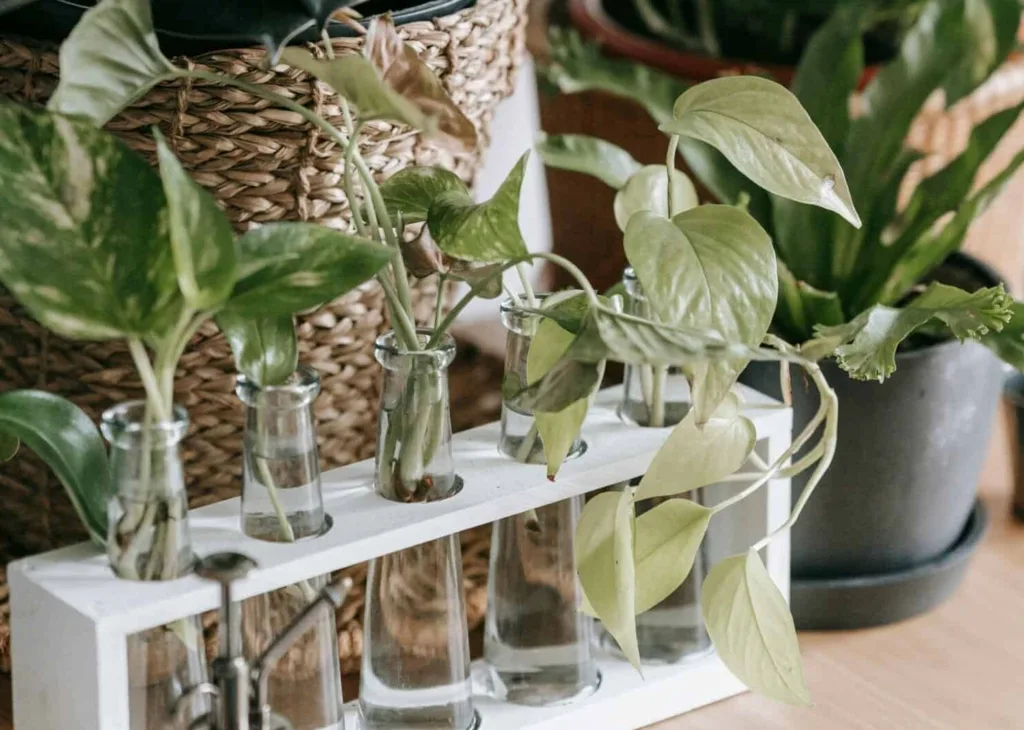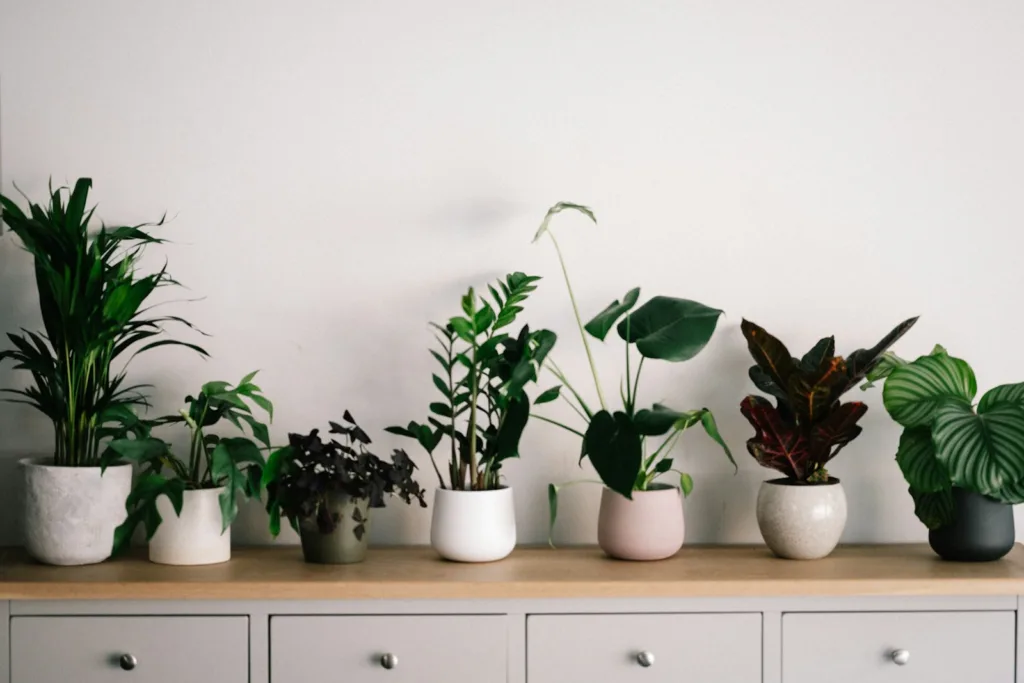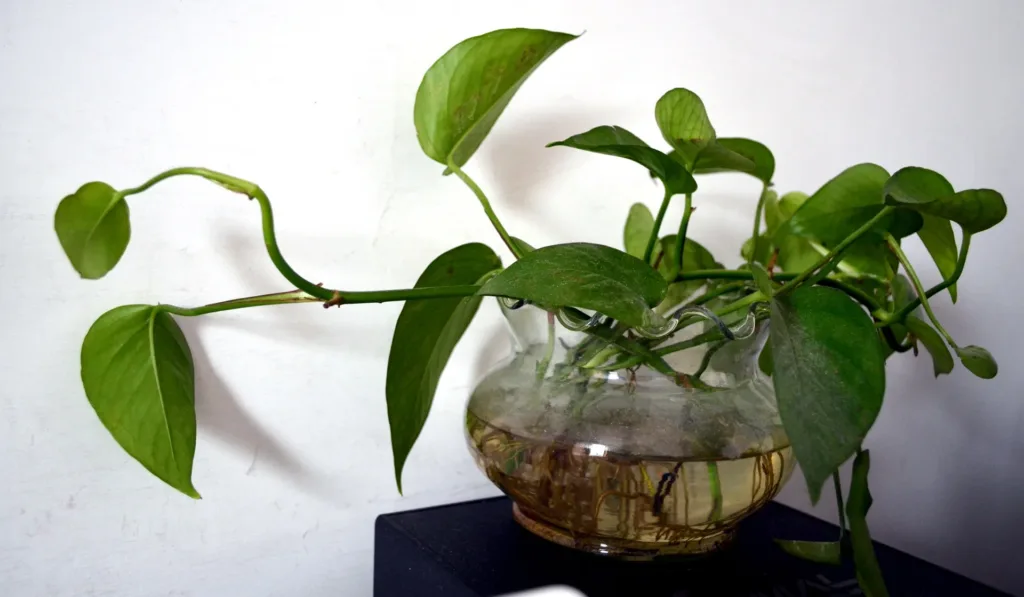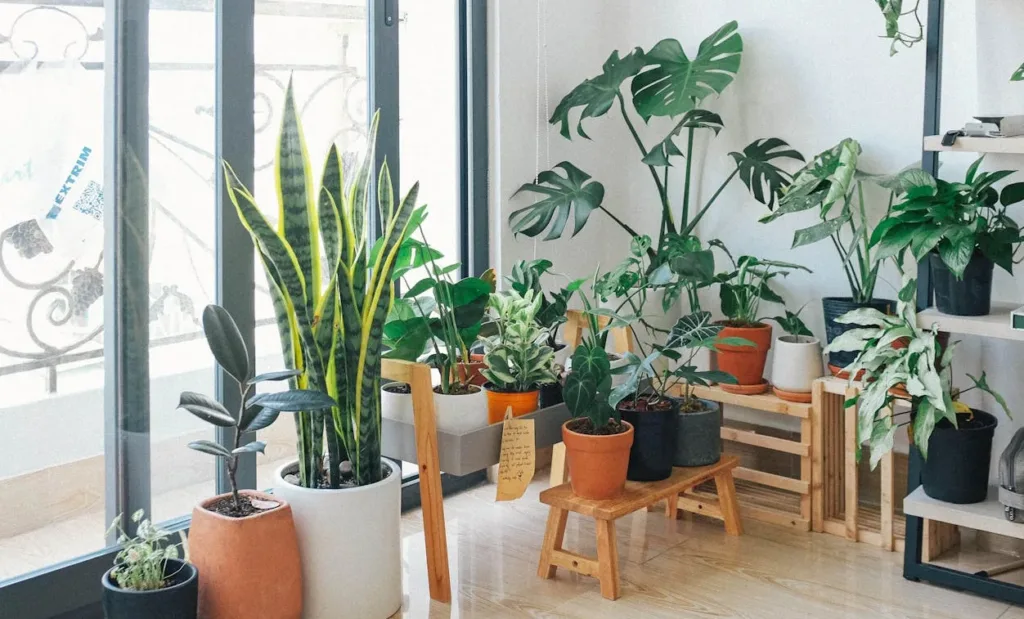Transforming your home into a serene and stylish haven has never been easier. Indoor plants not only enhance the aesthetic of your living space but also bring numerous health and psychological benefits. Even if you’re a seasoned plant enthusiast or just starting your journey, this guide will introduce you to the best indoor plants that can elevate your home decor effortlessly.
Table of Contents
Benefits of Indoor Plants
Indoor plants are more than just a pretty addition to your home. Here’s why you should consider having them:
- Improved Air Quality: Many indoor plants act as natural air purifiers, they remove toxins and improving oxygen levels.
- Stress Reduction: Studies show that if one stays around greenery it will help him to reduce stress and promote mental well-being.
- Aesthetic Appeal: Indoor plants add a natural, refreshing look to any space and makes your home feel cozy and inviting.
- Noise Absorption: Some plants can absorb background noise, creating a peaceful environment.
Pros of Having Indoor Plants
- Easy way to bring nature indoors.
- Affordable home decor solution.
- Many require minimal maintenance.
- Suitable for small spaces or apartments.
- Versatile in complementing any interior design style.
Cons of Having Indoor Plants
- Some plants might be toxic to pets or children.
- Overwatering or underwatering can cause them to die.
- They might attract pests if not maintained properly.
- Some plants require specific light conditions, which can be tricky indoors.
Essentials for Maintaining Indoor Plants
Before diving into the top 10 plants, ensure you’re prepared:
- Lighting: Know the lighting needs of your chosen plants (low, medium, or bright light). Some indoor plants can grow without lighting but some needs a little or more lighting .
- Pots for growing in water : You heard right , some indoor plants can grow in water . For this you have to choose a pot which have no drainage holes .
- Watering Schedule: Overwatering is the leading cause of plant death—stick to a proper schedule.
- Pots with Drainage: Use pots with good drainage to avoid root rot.
- Soil Type: Use soil mixes designed for indoor plants. You can use potting mix that contain peat moss, perlite, vermiculite, and usually some fertilizer . No worries if you don’t have this .Use only perlite and soil in 1:4-1:1 ratio .
So, let’s dive into —
Top 10 Indoor Plants for your home
1. Monstera Deliciosa (Swiss Cheese Plant)

Monstera Deliciosa is a popular tropical plant known for its large, glossy leaves with unique splits and holes. It’s often seen in homes and offices due to its bold appearance and easy care. This plant can grow quite large, making it a striking centerpiece in any room. With its trailing vines and dramatic foliage, it brings a sense of the tropics indoors.
- Sunlight Requirement: Prefers bright, indirect light but can tolerate low light conditions. Direct sunlight can scorch its leaves, so a spot with filtered light is ideal.
- Watering Requirement: Water when the top 2 inches of the soil are dry. Monstera prefers slightly moist soil but avoid overwatering, as this can lead to root rot.
- Can It Grow in Water?: While it can be propagated in water, Monstera Deliciosa thrives best when planted in soil. Water propagation is only suitable for initial growth before transferring it to a pot .
2. Snake Plant (Sansevieria)

Description:
The Snake Plant is a hardy, low-maintenance plant that can tolerate a variety of conditions, including low light and irregular watering. Its long, upright leaves add an architectural touch to any space, making it a popular choice for both beginners and experienced plant lovers. Snake plants are also known for their air-purifying properties, helping remove toxins from the air.
- Sunlight Requirement: Thrives in low to bright indirect light. It can also handle direct sunlight but prefers a bit of shade for optimal growth.
- Watering Requirement: Water sparingly, about once every 2-3 weeks. Let the soil dry completely between waterings to prevent root rot.
- Can It Grow in Water?: Snake plants can be propagated in water, but they should be planted in soil for long-term health. Water propagation is suitable for growing new roots before potting.
3. Pothos (Devil’s Ivy)
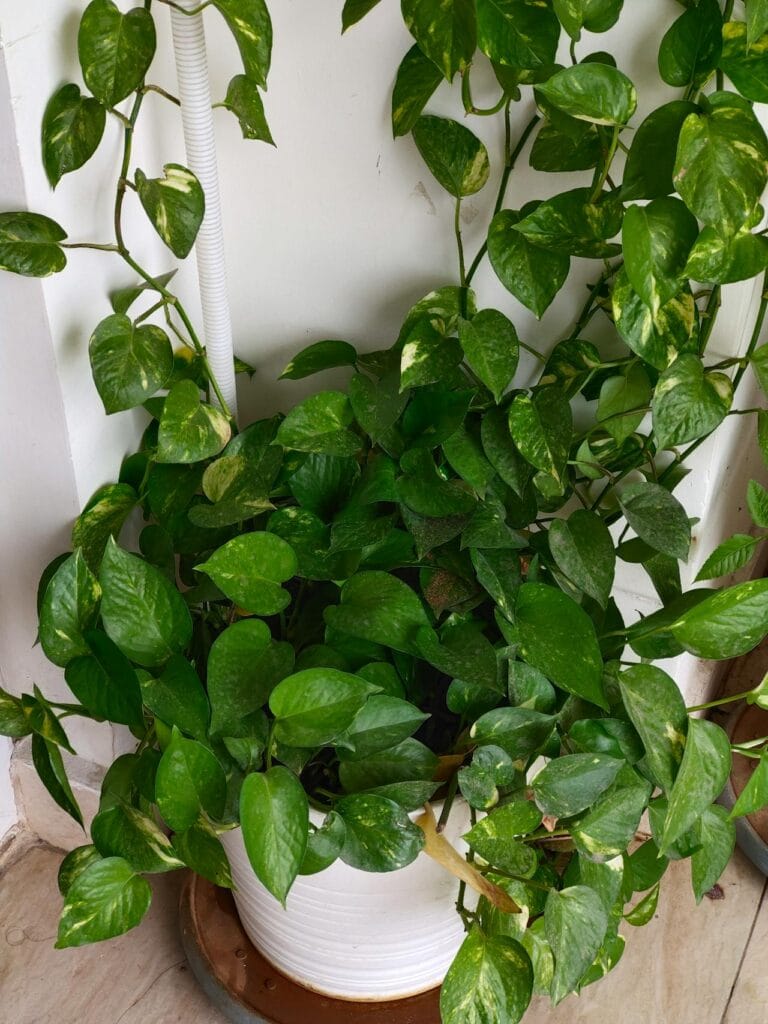
Description:
Pothos is one of the most popular and versatile indoor plants, known for its heart-shaped leaves and trailing vines. It’s perfect for hanging baskets, shelves, or even as a cascading plant in pots. Pothos is virtually foolproof, making it an excellent option for beginners. Plus, it can thrive in a wide range of light and humidity levels.
- Sunlight Requirement: Tolerates low to bright indirect light. It can thrive in dim spaces, making it ideal for offices, bedrooms, or dark corners of a home.
- Watering Requirement: Water when the soil feels dry to the touch. Avoid overwatering, as it can lead to root rot.
- Can It Grow in Water?: Yes, Pothos can be grown entirely in water. Simply place the cuttings in a glass of water, and they’ll grow roots. This makes it a great choice for propagation in water.
4. Peace Lily (Spathiphyllum)
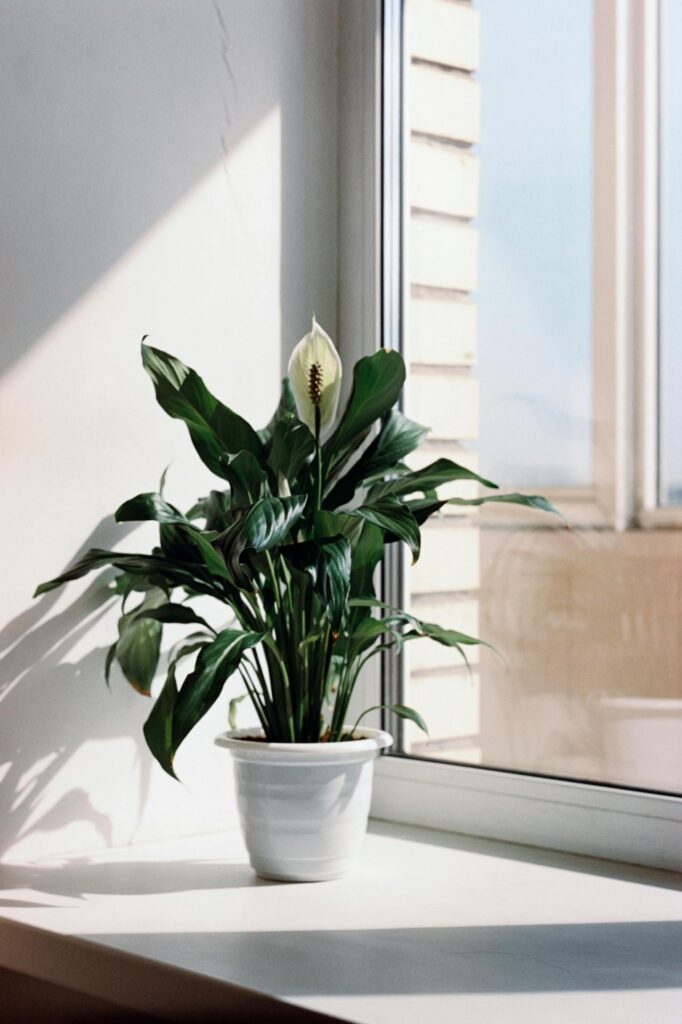
Description:
Peace Lily is loved for its elegant white flowers and lush, dark green leaves. It’s an easy-to-care-for plant that thrives in indoor environments and is known for its air-purifying properties. Peace Lilies are excellent choices for low-light spaces, making them perfect for bedrooms, bathrooms, or offices. They add a touch of sophistication with their simple yet beautiful appearance.
- Sunlight Requirement: Prefers bright, indirect light but can tolerate low light. Peace Lilies will bloom more often in brighter light, though they will still survive in low light.
- Watering Requirement: Keep the soil consistently moist but not soggy. Water when the top inch of soil feels dry. Peace Lilies like their soil a little damp but will rot if left in too much water.
- Can It Grow in Water?: Peace Lilies can be propagated in water, but they grow best in soil for long-term health. Water propagation is suitable for starting new plants.
5. Rubber Plant (Ficus Elastica)
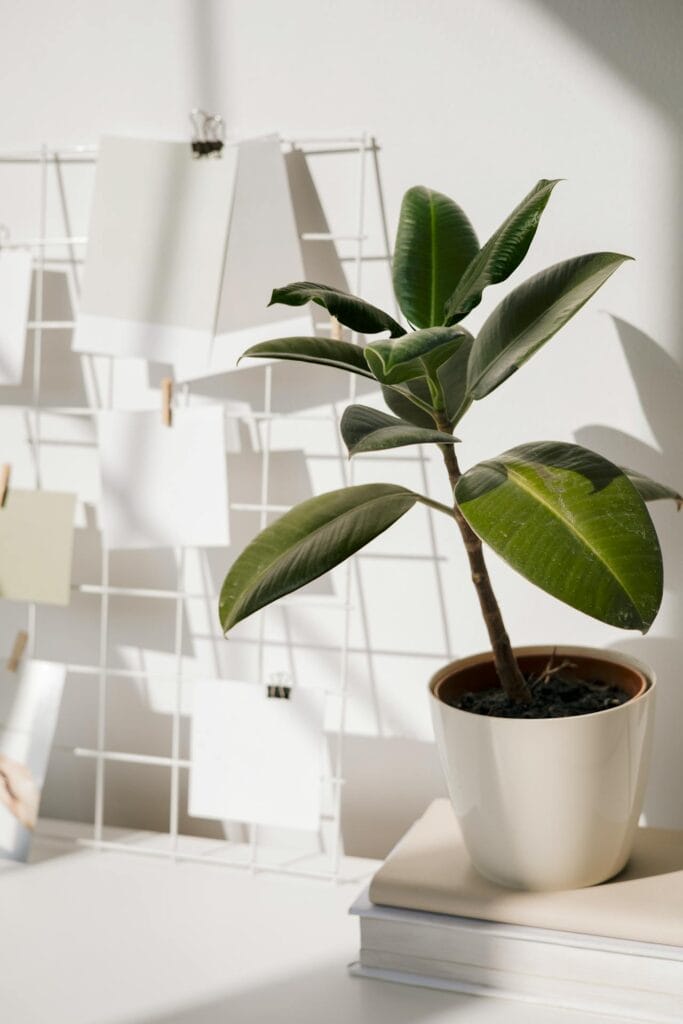
Description:
Rubber plants are known for their bold, glossy leaves that can make any room feel more modern and tropical. With proper care, this plant can grow quite tall, becoming a beautiful focal point in any space. It’s perfect for people looking to add a touch of sophistication and greenery without too much maintenance.
- Sunlight Requirement: Prefers bright, indirect light but can tolerate some direct sunlight. Avoid placing it in low-light conditions, as it may lose its vibrant leaves.
- Watering Requirement: Water when the top inch of soil is dry. Rubber plants prefer slightly moist soil but do not like to be waterlogged. Let the soil dry out a bit between waterings.
- Can It Grow in Water?: Rubber plants are best grown in soil. They can be propagated in water but need to be potted in soil for long-term growth and health.
6. ZZ Plant (Zamioculcas Zamiifolia)
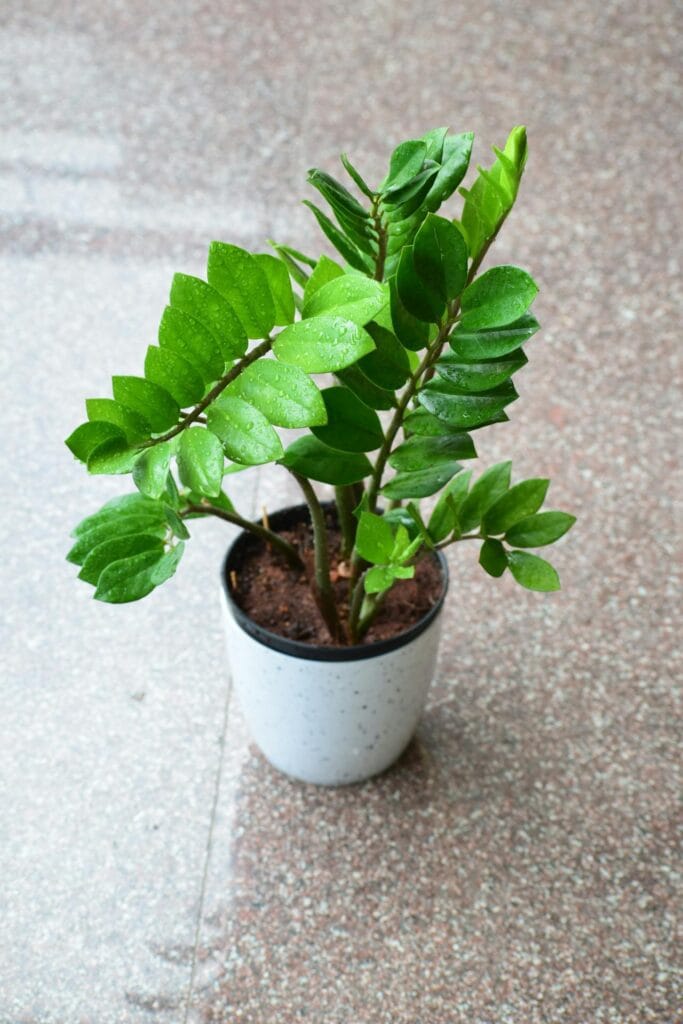
Description:
The ZZ Plant is a tough, nearly indestructible plant with thick, waxy leaves that shine under the right light. This low-maintenance plant thrives in neglect, making it ideal for people who travel a lot or have a busy schedule. The ZZ Plant is also known for its air-purifying capabilities and is a great addition to any home or office.
- Sunlight Requirement: Tolerates low to bright indirect light. It can survive in low light, so it’s perfect for darker rooms or offices.
- Watering Requirement: Water sparingly, as the ZZ Plant is drought-tolerant. Water only when the soil has dried completely, about once every 2-3 weeks.
- Can It Grow in Water?: While it can be propagated in water, the ZZ Plant thrives best in soil for long-term growth. It’s best to keep it in a pot with drainage.
7. Spider Plant (Chlorophytum Comosum)

Description:
Spider plants are easy to grow and maintain, with long, arching leaves that often produce “babies” or offshoots that can be propagated into new plants. This plant is perfect for beginners and is particularly effective in improving indoor air quality. It also has the added bonus of being non-toxic to pets, making it safe for households with animals.
- Sunlight Requirement: Prefers bright, indirect light but can tolerate lower light levels. However, it may not produce as many offshoots in low light.
- Watering Requirement: Water regularly but allow the soil to dry out slightly between waterings. Overwatering can cause the leaves to turn yellow.
- Can It Grow in Water?: Spider plants can be propagated in water by placing cuttings in a glass. However, they prefer to be planted in soil for long-term growth.
8. Fiddle Leaf Fig (Ficus Lyrata)

Description:
The Fiddle Leaf Fig is a trendy plant with large, violin-shaped leaves. Known for its bold, dramatic appearance, it’s often used as a statement piece in modern interiors. However, it requires a bit more attention than other indoor plants, especially when it comes to watering and light conditions.
- Sunlight Requirement: Prefers bright, indirect light. It can tolerate some direct sunlight but should be protected from intense midday rays, which can scorch the leaves.
- Watering Requirement: Water when the top 2 inches of soil are dry. Be cautious not to overwater, as this can lead to root rot.
- Can It Grow in Water?: Fiddle Leaf Figs do best in soil. They can be propagated in water, but long-term growth should be in a well-draining pot.
9. Aloe Vera
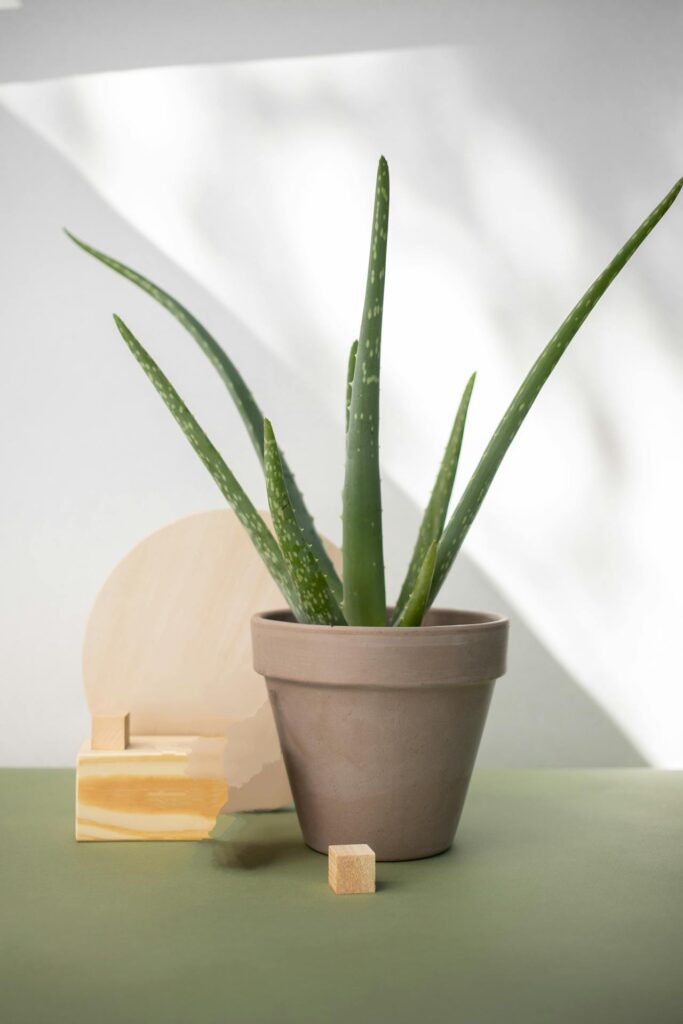
Description:
Aloe Vera is a succulent plant that not only adds beauty to your home but also has medicinal uses. It’s great for sunny spots, and its thick, fleshy leaves store water, allowing it to survive in dry conditions. Aloe Vera is perfect for windowsills or sunny balconies where it can soak up the sun.
- Sunlight Requirement: Prefers bright, indirect light and can tolerate direct sunlight. It thrives in sunny spots and should be placed where it can get plenty of light.
- Watering Requirement: Water every 2-3 weeks, allowing the soil to dry completely between waterings. Aloe Vera is drought-tolerant and doesn’t need much water.
- Can It Grow in Water?: Aloe Vera does not thrive in water. It should be grown in well-draining soil for optimal health.
10. Calathea (Prayer Plant)

Description:
Calatheas are known for their stunning, patterned leaves that appear to move as the plant “prays.” The leaves fold up at night and open again in the day, making this plant particularly unique and eye-catching. It thrives in high humidity and is a great option for bathrooms or kitchens.
- Sunlight Requirement: Prefers bright, indirect light but can tolerate lower light conditions. Direct sunlight can cause the leaves to burn.
- Watering Requirement: Keep the soil evenly moist but not soggy. Calatheas prefer slightly humid environments, so make sure the soil doesn’t dry out completely between waterings.
- Can It Grow in Water?: Calatheas can be propagated in water, but they grow best in well-draining soil. For long-term health, it’s better to keep them in soil.
Final Thoughts
Indoor plants are an incredible way to add life, style, and freshness to your home. Whether you want to create a jungle-like vibe or keep it minimal with a few plants, there’s something for everyone. Each plant on this list has its unique charm and benefits.
FAQs
What are the best low-maintenance indoor plants for beginners?
Snake Plant, Pothos, ZZ Plant, and Spider Plant are some of the easiest indoor plants to care for. They require minimal watering and thrive in low light, making them perfect for beginners.
Can indoor plants grow without sunlight?
While no plant can survive without light, many indoor plants like Snake Plant, Peace Lily, and Pothos can thrive in low-light conditions or artificial light.
How often should I water my indoor plants?
The watering schedule depends on the plant type. Most indoor plants like Monstera or Rubber Plant need watering when the top 1-2 inches of soil feel dry, while succulents like Aloe Vera need less frequent watering.
Which indoor plants are safe for pets?
Spider Plant, Areca Palm, and Calathea are pet-friendly options. Avoid toxic plants like Peace Lily and Rubber Plant if you have cats or dogs.
Can I grow indoor plants in water instead of soil?
Yes, plants like Pothos, Peace Lily, and Spider Plant can grow in water. However, some plants, like Monstera and Rubber Plant, grow better in soil.
What are the benefits of having indoor plants?
Indoor plants improve air quality, reduce stress, enhance decor, and create a calming environment. They also add a touch of greenery to indoor spaces.
Do indoor plants require fertilizers?
Yes, indoor plants benefit from fertilizers during their growing season (spring and summer). Use a balanced liquid fertilizer monthly for most plants.
How do I prevent pests on indoor plants?
Regularly clean leaves, avoid overwatering, and inspect plants for pests like spider mites or mealybugs. Use insecticidal soap or neem oil for treatment if needed.
Which indoor plants grow well in small spaces?
Pothos, Snake Plant, Calathea, and ZZ Plant are compact and ideal for small apartments or rooms.
Today’s sponsor-
Ideas for Your Home – a blog to inspire home improvements






